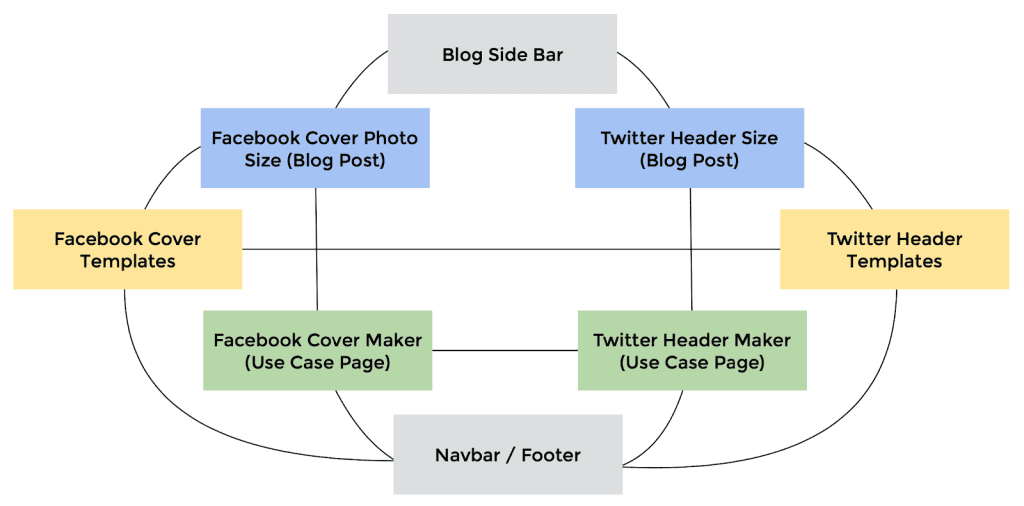In this interview, we sit down with Ben Torres, Vice President of Operations at The Vintage Whiskey and Cigar Bar, to explore the vision and passion ...
How Snappa Makes Online Graphic Design Easy for Everyone
Written by: Esther Strauss
Esther is a business strategist with over 20 years of experience as an entrepreneur, executive, educator, and management advisor.
Published on August 7, 2024

Christopher Gimmer, co-founder of Snappa, has transformed the landscape of online graphic design with an innovative platform that empowers non-designers to create stunning visuals effortlessly.
In this interview, Christopher shares the inspiration behind Snappa, the challenges faced during its development, and the strategies that have driven its success.

Inspiration and Vision
SBS – What inspired you to create Snappa, and how has the vision evolved since its inception?
Christopher – Back in 2014, my co-founder Marc and I were working on a business called BootstrapBay. In order to grow that business, we relied primarily on content marketing and SEO.
However, since we had no team and virtually no marketing budget, I had to create all the images for blog posts myself. Even though I sucked at using Photoshop, it didn’t make sense to pull Marc away from development just to create blog post images.
It was during this time that I wished there was a graphic design tool that catered to marketers like myself — something that was super easy to use but still able to produce professional-looking online graphics in a timely manner. With that, the idea of Snappa was born.
Since launching, the vision hasn’t changed all that much. We’re still helping marketers, entrepreneurs, and non-designers create online graphics in a snap.
Early Challenges
SBS – What challenges did you face in the early stages of developing Snappa, and how did you overcome them?
Christopher – We faced a lot of development challenges in the early stages of Snappa. Especially back then, web browsers were not meant to be used as graphic design tools!
Like most SaaS startups, we were always toeing the line between wanting to launch early enough and not creating tech debt that would bite us down the road. Unfortunately, right after we launched our paid offering, we came to the realization that the tech stack we chose wouldn’t work for us in the long term.
As a result, we made the painful decision to rewrite a large portion of the codebase. This was pretty stressful, given that we already had a huge list of feature requests, and we wouldn’t be able to work on new features for three months until the code was rewritten. However, it had to be done.
Fortunately, we were able to push through the refactor, and a few months later, we were ready to start shipping new features again. During that time, we were still able to keep growing, and customers stuck with us.
Staying Competitive
SBS – How do you ensure Snappa stays ahead of the competition in the rapidly changing graphic design software market?
Christopher – Since we’re a bootstrapped company that’s never raised money, we knew early on that we wouldn’t be able to compete with the major VC-backed companies on a feature-by-feature basis. As a result, we made some strategic decisions to focus and niche down. Most notably, we focus on digital graphics only and cater almost exclusively to marketers and SMBs.
By doing so, we can offer a better user experience for our target market because we purposely leave out unnecessary features and use cases that would simply bloat the product.
In addition to staying focused, we place a strong emphasis on customer feedback. We actively listen to our customers to gain valuable insights into their needs and pain points. This allows us to make informed decisions about feature development and improvements.
We continue to prioritize ease of use, which has been a core differentiator for Snappa since its inception. Our goal is to make the design process as intuitive and straightforward as possible, enabling even those with no design experience to create professional-quality graphics.
Balancing Features
SBS – How do you balance the need for a user-friendly interface with the demand for advanced features?
Christopher – The key for us is having a very clear understanding of who our ideal customer is and who we’re building for.
For example, we’ve had certain people try the software and ask if we can support on-demand print graphics. If we decided to go down that road, it would add a lot of complexity to the product and would require us to either hire more developers or pull resources away from our main focus. Since the vast majority of our customers only use Snappa for digital graphics, we made the decision not to support print.
By doing so, we know that we’ll end up losing out on certain customers who will go to our competitors. However, ignoring print strengthens our core value proposition and makes the software more valuable to customers who have no need for print graphics.
This is just one of many examples where focusing on ease of use enables us to forego some of the more advanced features that we could otherwise build.
Marketing Strategies
SBS – What strategies have been most effective in marketing Snappa to a diverse range of users?
Christopher – Before we launched Snappa, we also launched a free stock photo website called StockSnap (we ended up selling it several years ago). Given the audience overlap, we knew that StockSnap would be key to getting Snappa off the ground.
Once we had a beta ready for Snappa, we began cross-promoting it on StockSnap and that drove thousands of initial users for the product. We did this by adding links throughout the website as well as pop-ups promoting Snappa anytime someone downloaded a photo for the first time.
Eventually, we began to see diminishing returns from cross-promoting Snappa on StockSnap. At that point, we began to focus heavily on content marketing + SEO.
After doing a lot of keyword research, we realized that there were a lot of people searching for the proper image dimensions for the various social media platforms that existed. Since some percentage of those searches would likely be interested in creating social media graphics, we thought this would be the perfect type of content for us to create. Thus, we wrote high-quality guides on all the different image dimensions for social media platforms (like this one) and were able to generate a lot of traffic as a result.
In addition to blog content, we also created template pages and landing pages for the various use cases that Snappa supports. After some internal linking and basic SEO optimization, we were able to generate a lot of traffic to all these various pages. Here’s what that looks like:

Enhancing User Experience
SBS – How has the integration of stock photos and templates enhanced the user experience on Snappa?
Christopher – We knew early on that integrating free stock photos would be one of the most valuable parts of Snappa, and it’s one of the key pain points I had with Photoshop. By integrating stock photos directly within Snappa, we would save users a ton of time by not having to scour the internet for stock photos and then having to import them into a graphic design tool.
However, we heavily underestimated just how important templates would be…
Once we had a working beta for Snappa, we got it in the hands of many users and started collecting data and feedback. While this should have been really obvious, it became painfully clear that marketers and non-designers were really bad at designing graphics without a starting point. Some just couldn’t even get started when staring at a blank page.
At that point, we realized that we couldn’t launch the product unless we had templates baked-in. So, we spent the next few months incorporating templates along with a few other key features we had identified during the beta period.
Once templates were added, usage + retention was much better and we received a ton of positive feedback about how valuable the templates were. To this day, they’re one of the key value-adds for Snappa.
Pricing Models
SBS – How do you approach pricing and subscription models to ensure they are accessible yet profitable?
Christopher – I’d be lying if I said that we had a sophisticated method for determining pricing. My thought process has always been to pick a price that our target market would consider a no-brainer that still allows us to profitably grow the business.
Given that we’re in a highly competitive market, we’re also pretty mindful of what our competitors are charging. If we set prices that are too high, we may start driving customers into the hands of our competitors.
On the contrary, if we’re priced well below our competitors, it might be a sign that we’re undercharging relative to the value we’re providing.
While I don’t recommend this for most SaaS startups, especially those that are more upmarket than we are, we pretty much haven’t changed pricing since we launched. Rather, we focused on making the software better and increasing the amount of value we we’re providing.
Future Trends
SBS – What trends in graphic design do you see shaping the future of tools like Snappa (for example, AI)?
Christopher – It’s no surprise that generative AI has been a massive breakthrough over the past year. Tools like Midjourney now allow users to create graphics with a simple prompt.
However, while they’re pretty phenomenal at creating run-of-the-mill images like a beach sunset, they’re not quite there yet when it comes to designing effective marketing graphics.
That being said, we know it’s just a matter of time until the tech gets there. When it does, we’ll be ready to integrate with the appropriate APIs and libraries to bring that functionality into Snappa.
Support for Non-Designers
SBS – How does Snappa support non-designers in creating professional-quality graphics?
Christopher – Snappa is designed with non-designers in mind, ensuring that anyone, regardless of their design experience, can create professional-quality graphics effortlessly.
As we’ve mentioned before, one of the key features that support non-designers is our extensive library of pre-designed templates. These templates cover a wide range of use cases and are professionally crafted by our in-house design team. Users can easily customize these templates by changing text, colors, and images, allowing them to create unique designs without starting from scratch.
In addition to templates, we also offer a vast library of stock photos, icons, and graphics that users can include into their designs. This eliminates the need to source external assets, providing everything they need within the platform.
All-in-all, we make it possible for non-designers to create beautifully looking graphics with just a few button clicks.
Advice for Entrepreneurs
SBS – What advice would you give to other entrepreneurs looking to enter the SaaS market?
Christopher – Getting into the SaaS market requires a lot of patience in the beginning but it can be very rewarding long-term.
The biggest difficulty with SaaS is that there are so many moving parts to the business. You need to excel at development, user acquisition, customer success, retention, and a whole lot more.
I’d say the most important thing is to be crystal clear on who your target customer is and ensure that you’re providing a ton of value for those customers. While it’s tempting to focus all your effort on bringing in more users/customers, it’s often more important to delight existing customers and make sure retention is as low as possible.
Lessons Learned
SBS – What are the biggest lessons you’ve learned as a business owner in the tech industry?
Christopher – Since the tech industry moves so quickly, having a customer-centric approach is critical. By actively listening to customers and understanding their needs, it’s a lot easier to build a product that genuinely solves their problem. While many of us wish we could be Steve Jobs and tell customers what they should want, it’s much easier to simply listen to customers and do a good job of interpreting their actual needs and desires.
In addition to being customer-centric, I’ve also learned that focus is extremely important. Most of the mistakes we’ve made in the past were a result of trying to do too many things at once or getting distracted by shiny objects. Building a SaaS is already hard enough, so give yourself the best chance of success by giving it the focus and attention it requires.
Staying Motivated
SBS – How do you stay motivated and inspired amidst the challenges of running a tech company?
Christopher – There are a couple of things that help me stay motivated despite the challenges of running a tech company.
For starters, it’s incredibly rewarding to put things out in the world and create products out of thin air. To this day, it still amazes me that tens of thousands of people continue to use and get value from Snappa.
Second, I’m lucky to have a fantastic co-founder and an awesome team around us. Going through the tough times is a lot easier when I have one of my best friends along for the ride.
Lastly, I do my best to maintain a healthy work-life balance. In the early days of running Snappa, my mood was heavily correlated to how fast we were growing and whether or not we were dealing with any major issues that day. I later realized this was not a healthy way to run a business.
Engaging in activities outside of work, such as spending time with family, playing golf, and working out, helps recharge my energy and provides a fresh perspective. This balance ensures that I can continue to stay motivated at work and ready to take on the challenge of running a SaaS business.
Future Goals
SBS – What can you tell us about your future plans and product offerings?
Christopher – With regards to Snappa, we plan to continue improving the product and ensure that it remains blazing fast and incredibly simple to use.
Outside of that, we’re developing a new product called GoodMetrics, which is an alternative to Google Analytics.
The goal of GoodMetrics is to help marketers and business owners easily identify where your traffic is coming from, what’s driving conversions, and which content performs best — all in a privacy-friendly way. As a marketer who became increasingly frustrated with the new GA4, I feel as though this type of product is desperately needed right now.
Subscribe to Our Newsletter
and gain insider access to cutting-edge business insights and trends.
Featured Resources

Ben Torres on Creating a Whiskey And Cigar Bar In Charlotte, NC
Published on September 2, 2024
Read Now

How Bombay Eats Brings Authentic Indian Cuisine to Chicago
Published on September 2, 2024
Ali Dewjee and his wife Falguni embarked on a flavorful mission 14 years ago when they founded Bombay Eats, originally known as Bombay Wraps. With a ...
Read Now

How MedAssent DDS Supports Dental Medication Management
Published on September 2, 2024
Lauren Fang is a pioneering force in digital health, co-founding MedAssent DDS with a vision to revolutionize dental care. With a deep-rootedconnect ...
Read Now
Comments